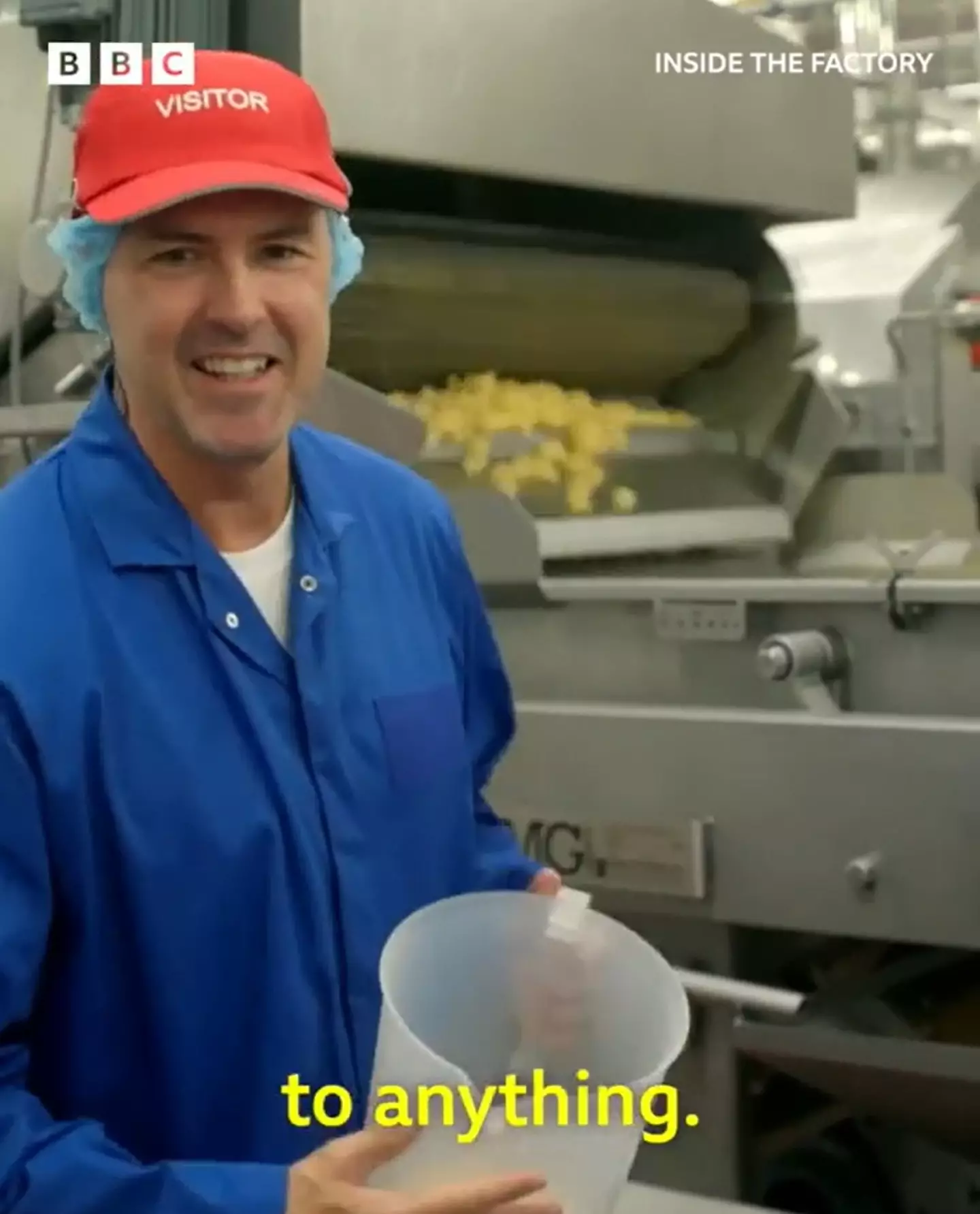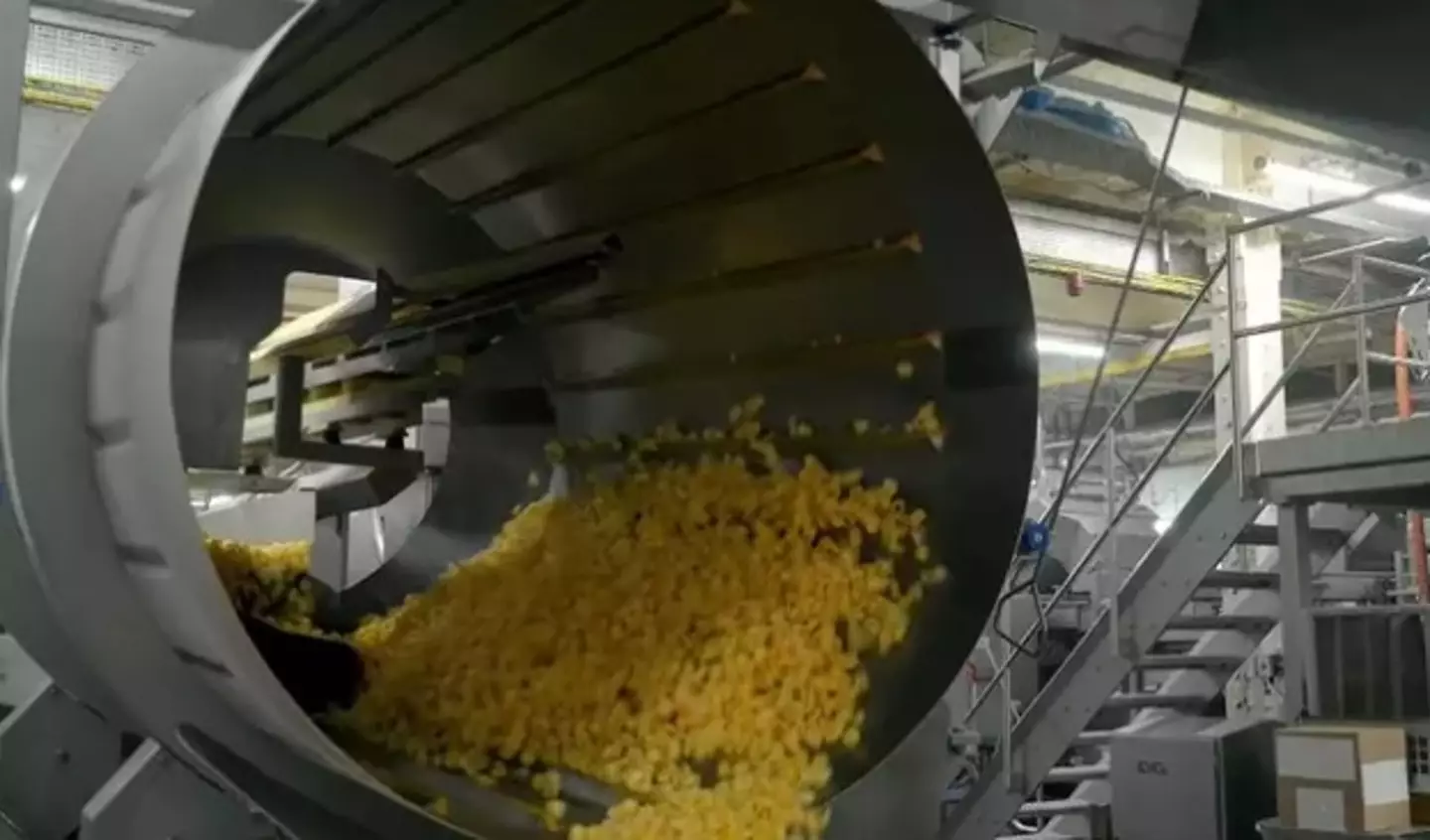
You may have noticed that there’s no such thing as a Quaver plant or a Quaver beast. Where, you might ask, do Quavers come from?
It’s the kind of question that hides in plain sight, and then one day you’re 30 years old and realising it has literally never crossed your mind before.
As it turns out, it’s a question best left unanswered as some Brits have discovered.
As part of Inside the Factory, a BBC documentary series, Paddy McGuinness ventured into a Quavers manufacturing plant (a Quavers plant!) to witness their genesis first-hand.
Advert

The Lincoln factory has been Quavers’ home for more than half a century, and it produces half a billion packets of the mystery crisps every year.
Wasting no time, the documentary laid down the first shock of the night by claiming that Quavers aren’t actually crisps.
They’re actually made from the leftover potato starch powder produced by the crisp-making process.
Advert
As such, they aren’t crisps, they’re just Quavers. And that’s okay.
Undeterred, McGuinness was then shown the laborious process of making a Quaver.
It all starts with starch powder, fine rice, and soya flours getting bundled into a mixer following by some salt, pepper, onion powder, and yeast.
It’s blended with water to create a Quavers dough, which is mixed extensively before being pushed through an ‘extruder’. This machine shapes materials by pushing them through a special opening under high pressure, similar to how pasta is made.
Advert
The resultant sheet is 1mm thick and looks a little like a massive lasagne sheet. The dough is then stretched over rollers before heading through an 18m-long steamer.
During its steaming, the Quavers dough is raised by 40% and becomes stretchy and pliable. Perfect, you might say, for creating some Quavery curls.
The dough is then rapidly cooled and cut into 13mm x 40mm pellets in a machine that can produce 7,900 raw Quavers every minute.
They’re then doused in sunflower oil and cooked. 1.2 tonnes of these Quaver pellets pass through the specialist fryer ever hour, with 200-degree heat evaporating the dough’s water and puffing up the pellets into unmistakeable, curly Quavers.
Advert
The cook process takes just 20 seconds, but they’re not done yet.
Next, the virgin Quavers head into a metal drum where they’re coated in a precise amount of cheese flavouring, and then they’re finally ready to grace someone’s lunchbox.
We Brits aren’t the toughest bunch when it comes to watching sanitary, gore-free mass production processes, and so it’s proved with the comments on this clip.
"#InsideTheFactory is interesting and horrifying in equal measure. Industrialised production of 'food' ain't pretty," said one.
Advert
Another said: "My mum after watching Inside the Factory: 'I’ll never think about Quavers the same again'." One can only wonder how much time this person’s mum spends thinking about Quavers, but hopefully it’s hours per day.
"Watching how Walkers make potato starch to make Quavers is a very good example of the total lack of nutrition in most snack foods,” said another. “Ultra processed food that has been making us all obese for decades.
"#InsideTheFactory should be required viewing to realise what Big Food is up to." Did you really need to see the process to figure out that Quavers aren’t very nutritious? Have you seen them?

Thankfully, plenty others weren’t put off by the innocuous process.
"Watching Inside The Factory and now I want Quavers," said one.
A second added: "Imagine hating Ultra Processed Food. I've just watched Inside the Factory with Paddy McGuinness making Quavers and cheered at my TV at least 4 times."
A final one asked the most pertinent question: "Do I give a flying fig how they make Quavers?”
Topics: UK Food
